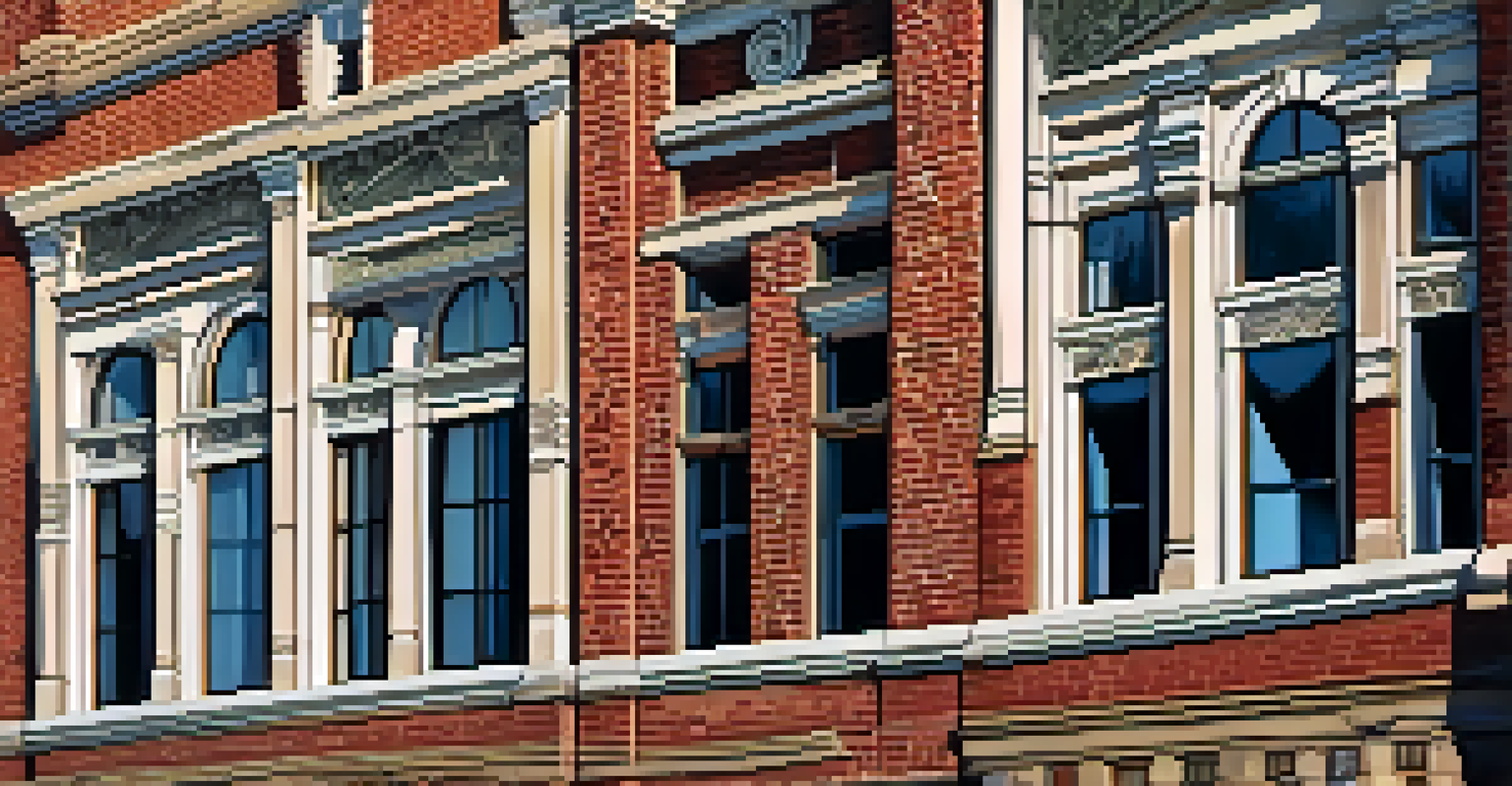Understanding Buffalo's Historic Preservation Laws and Guidelines

Introduction to Buffalo's Historic Preservation Framework
Buffalo, New York, is rich in history, with architecture that tells the story of its past. The city's historic preservation laws aim to protect and maintain these treasures for future generations. Understanding these laws is crucial for homeowners, developers, and history enthusiasts alike.
Preservation is not a passive activity; it requires the active engagement of the community to ensure that the past is not lost in a fast-changing world.
These regulations are designed to safeguard the unique character of Buffalo's neighborhoods, ensuring that new developments respect the historical context. They cover everything from design standards to the approval processes for renovations and restorations. By adhering to these guidelines, residents can contribute to the city’s cultural legacy.
Engaging with Buffalo's preservation framework not only helps maintain the aesthetic beauty of the city but also enhances property values. It creates a sense of pride among residents, fostering a deeper connection to their community's heritage.
Key Historic Preservation Laws in Buffalo
Buffalo's historic preservation laws are encapsulated within the City of Buffalo's Zoning Ordinance and the Preservation Code. These laws delineate which properties are protected and outline the criteria for significance. They also specify the procedures for obtaining permits for work on historic structures.

A key component of these laws is the designation process, where properties can be classified as landmarks or part of historic districts. This classification allows for enhanced protections and benefits, such as tax incentives for restoration projects. Understanding these classifications is essential for anyone looking to renovate or build in historically significant areas.
Buffalo's Preservation Laws Explained
Understanding Buffalo's historic preservation laws is essential for homeowners and developers to ensure renovations respect the city's rich architectural heritage.
Additionally, the Buffalo Preservation Board plays a vital role in reviewing proposed changes to designated properties. This board ensures that alterations are in harmony with the historical integrity of the structures, balancing progress with preservation.
The Importance of Historic Districts
Historic districts in Buffalo are areas recognized for their architectural and historical significance. These districts help maintain the character of neighborhoods while allowing for community development. They provide a framework for new construction that complements the historical context.
Historic preservation is a catalyst for community revitalization and economic development.
Being part of a historic district means that property owners must follow specific guidelines when making changes to their homes. While this may seem restrictive, it often leads to increased property values and a stronger sense of community. Residents often find pride in living within a historically rich area.
Moreover, historic districts serve as a draw for tourism, boosting the local economy. They attract visitors interested in history and architecture, providing opportunities for local businesses to thrive.
Navigating the Permit Process
For property owners in Buffalo, understanding the permit process is crucial when undertaking renovations on historic properties. This process can seem daunting, but breaking it down into steps can alleviate some of the stress. The first step usually involves consulting with the Buffalo Preservation Board to determine what approvals are necessary.
Once you have clarity on the requirements, you will need to submit detailed plans for your proposed changes. The board will review these plans to ensure they align with the preservation guidelines. This review process can take time, so it’s wise to plan accordingly.
Benefits of Historic Districts
Historic districts not only enhance property values but also foster community pride and attract tourism, benefiting the local economy.
After receiving approval, you can proceed with your project, but keep in mind that any changes during construction may require re-approval. Staying in close communication with the board throughout this process ensures a smoother experience and helps avoid any potential issues.
Common Challenges in Preservation Efforts
Preserving historic properties often comes with its set of challenges. Property owners may face restrictions that limit their ability to modernize or expand their homes. While these regulations aim to maintain historical integrity, they can sometimes feel restrictive to those looking to make personal updates.
Another challenge is funding. Restoration projects can be costly, and while there are tax incentives available, navigating these financial options can be complex. Property owners must do their research to find the best financial solutions that align with their preservation goals.
Lastly, community resistance can arise when changes are proposed, even if they comply with preservation guidelines. Engaging with neighbors and fostering open dialogue can help mitigate concerns and promote understanding among community members.
Benefits of Historic Preservation
While preserving historic properties can be challenging, the benefits far outweigh the difficulties. One of the most significant advantages is the preservation of cultural heritage. These buildings serve as a physical connection to the past, enriching the community's narrative.
Additionally, historic preservation can lead to economic benefits. Restored properties often attract tourism and can increase local property values. Communities that prioritize preservation tend to see growth in related businesses, such as restaurants and shops that cater to visitors.
Engagement in Preservation Efforts
Getting involved in local preservation groups and advocacy can strengthen community ties and support the safeguarding of Buffalo's historic assets.
Furthermore, historic preservation fosters community pride and identity. Knowing that you live in a place that values its history can enhance your connection to your neighborhood and inspire local engagement.
Getting Involved in Preservation Efforts
For those passionate about historic preservation in Buffalo, getting involved is easier than one might think. There are numerous organizations and volunteer opportunities dedicated to safeguarding the city’s architectural heritage. Joining local preservation groups can provide you with valuable resources and support.
Community meetings and workshops offer a platform for residents to voice their opinions and learn more about preservation laws. These events can also be an excellent opportunity to connect with like-minded individuals who share a passion for history. Collaboration often leads to impactful preservation initiatives.

Lastly, advocating for preservation legislation is another way to contribute. Engaging with local government and participating in discussions about preservation policies ensures that community voices are heard and considered in decision-making processes.